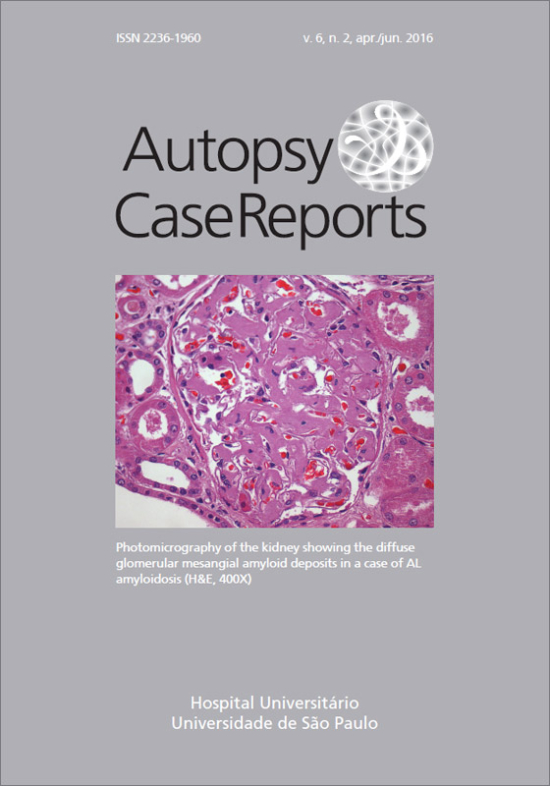Fatal pancreatic pseudocyst co-infected by Raoultella planticola: an emerging pathogen
DOI:
https://doi.org/10.4322/acr.2016.034Keywords:
Enterobacteriaceae Infections, Pancreatic Diseases, Peritonitis, AutopsyAbstract
Raoultella planticola is an aerobic Gram-negative bacterium belonging to the Enterobacteriaceae family. Initially identified in the 1980s, its pathogenic potential was further recognized when the first case of bacteremia was reported. Since then, only a few infections caused by this pathogen have been described. Although considered an opportunistic agent, fatal outcomes are associated with the infection by this pathogen, since it is more prevalent among the patients with immunodeficiency. The authors report the case of a middle-aged man diagnosed with end-stage renal disease and alcoholic pancreatitis, who was admitted to the emergency department with septic shock. Physical examination disclosed peritoneal irritation and a laparotomy was undertaken. Purulent peritonitis was found as well as a retroperitoneal abscess, which was drained. The postoperative period was troublesome, and the patient died. The autopsy showed a ruptured, infected pancreatic cyst and purulent peritonitis, among other findings. The culture of the peritoneal fluid and two blood sample sets were positive for R. planticola. The authors call attention to the importance of this emerging pathogen associated with severe gastrointestinal infectionsDownloads
Download data is not yet available.
Published
2016-06-11
Issue
Section
Article / Autopsy Case Report
License
Copyright
Authors of articles published by Autopsy and Case Report retain the copyright of their work without restrictions, licensing it under the Creative Commons Attribution License - CC-BY, which allows articles to be re-used and re-distributed without restriction, as long as the original work is correctly cited.
How to Cite
Campos, F. P. F. de, Guimarães, T. B., & Lovisolo, S. M. (2016). Fatal pancreatic pseudocyst co-infected by Raoultella planticola: an emerging pathogen. Autopsy and Case Reports, 6(2), 27-31. https://doi.org/10.4322/acr.2016.034



